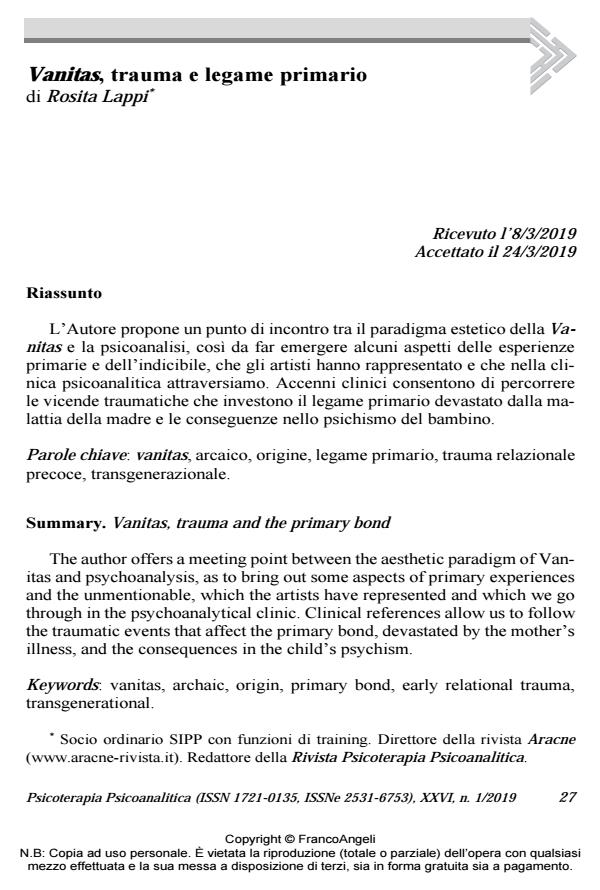Vanitas, trauma e legame primario
Titolo Rivista PSICOTERAPIA PSICOANALITICA
Autori/Curatori Rosita Lappi
Anno di pubblicazione 2019 Fascicolo 2019/1
Lingua Italiano Numero pagine 18 P. 27-44 Dimensione file 205 KB
DOI 10.3280/PSP2019-001003
Il DOI è il codice a barre della proprietà intellettuale: per saperne di più
clicca qui
Qui sotto puoi vedere in anteprima la prima pagina di questo articolo.
Se questo articolo ti interessa, lo puoi acquistare (e scaricare in formato pdf) seguendo le facili indicazioni per acquistare il download credit. Acquista Download Credits per scaricare questo Articolo in formato PDF

FrancoAngeli è membro della Publishers International Linking Association, Inc (PILA)associazione indipendente e non profit per facilitare (attraverso i servizi tecnologici implementati da CrossRef.org) l’accesso degli studiosi ai contenuti digitali nelle pubblicazioni professionali e scientifiche
L’Autore propone un punto di incontro tra il paradigma estetico del-la Vanitas e la psicoanalisi, così da far emergere alcuni aspetti delle esperienze primarie e dell’indicibile, che gli artisti hanno rappresentato e che nella clinica psicoanalitica attraversiamo. Accenni clinici consen-tono di percorrere le vicende traumatiche che investono il legame pri-mario devastato dalla malattia della madre e le conseguenze nello psi-chismo del bambino.
Parole chiave:Vanitas, arcaico, origine, legame primario, trauma rela-zionale precoce, transgenerazionale.
Rosita Lappi, Vanitas, trauma e legame primario in "PSICOTERAPIA PSICOANALITICA" 1/2019, pp 27-44, DOI: 10.3280/PSP2019-001003